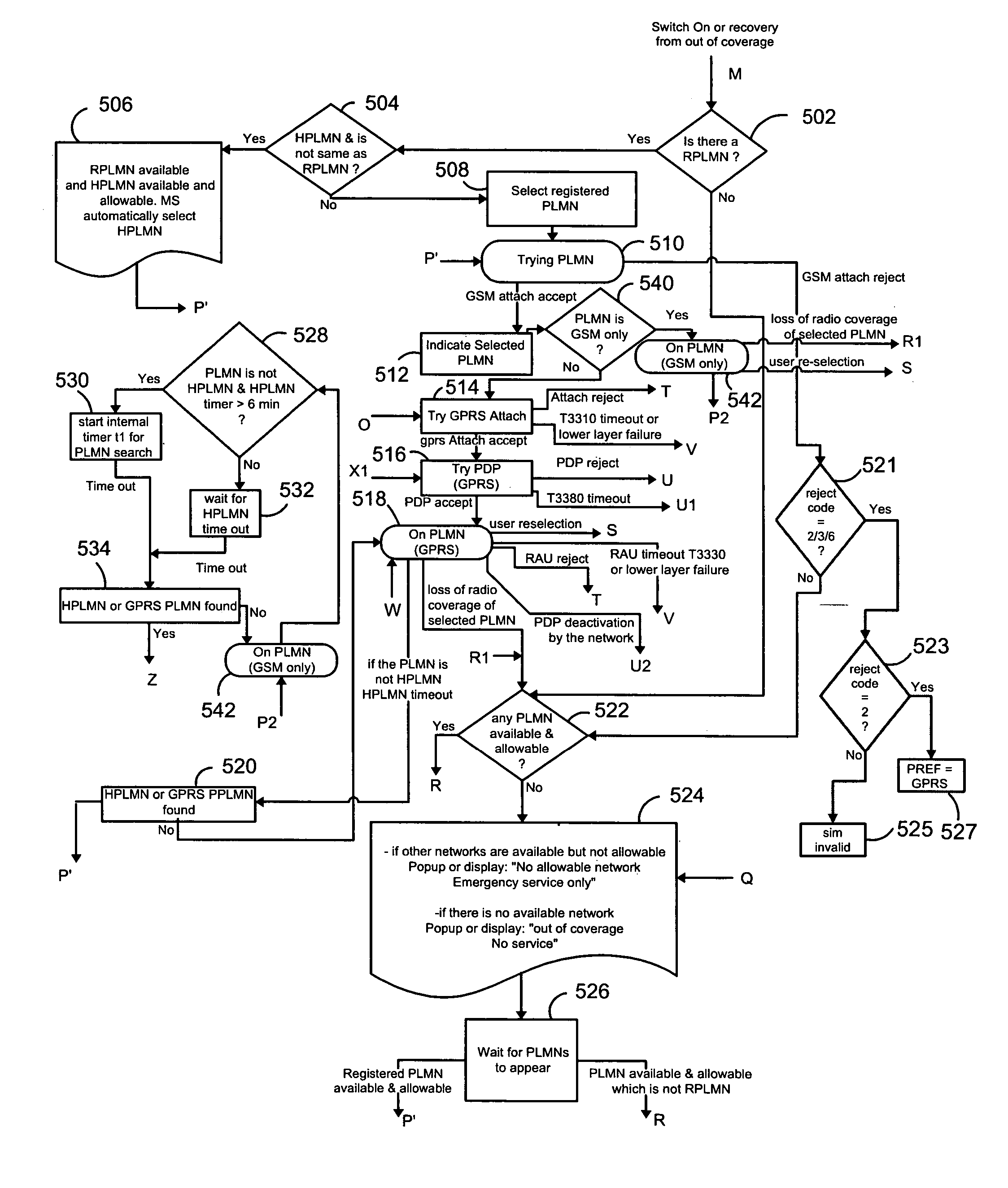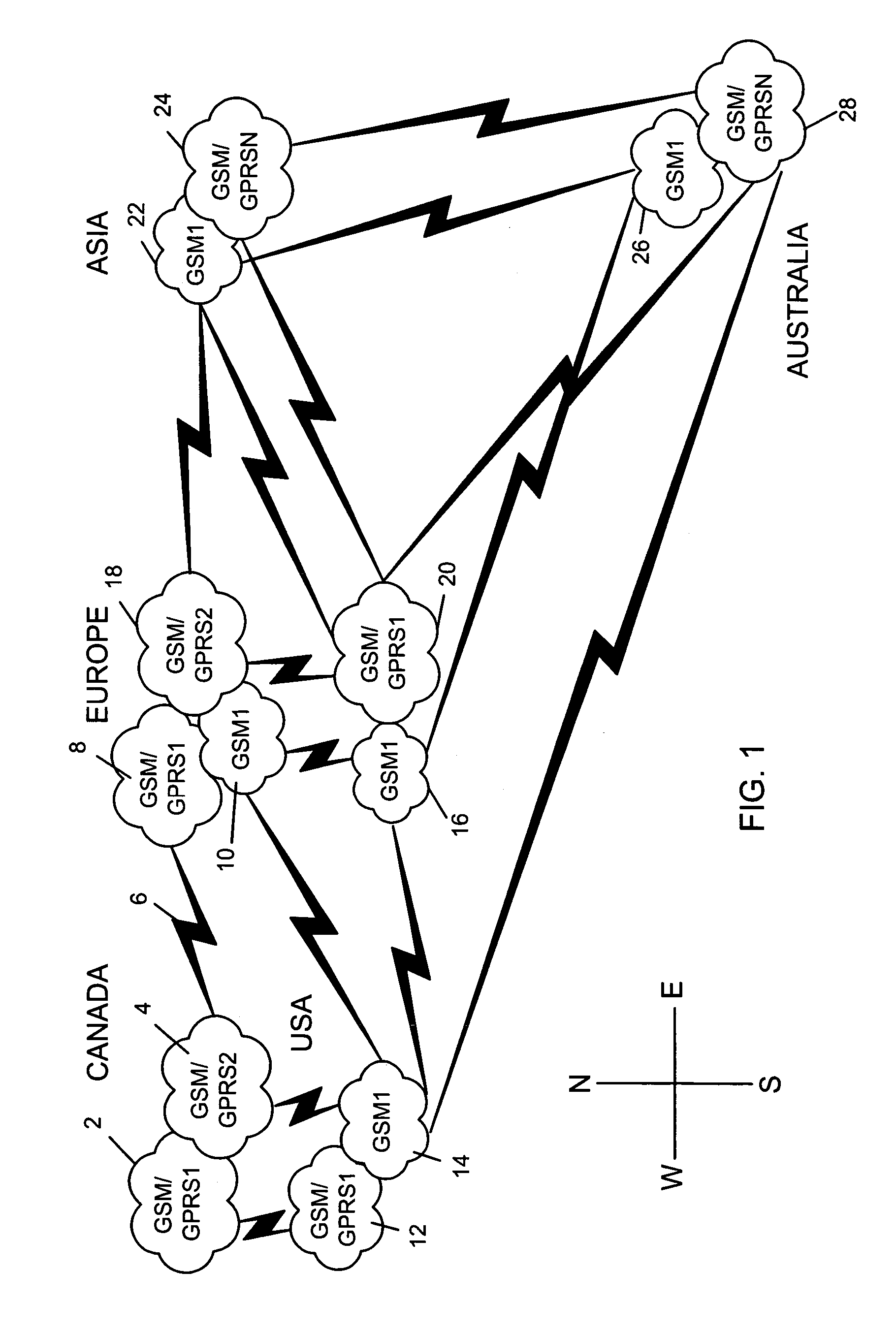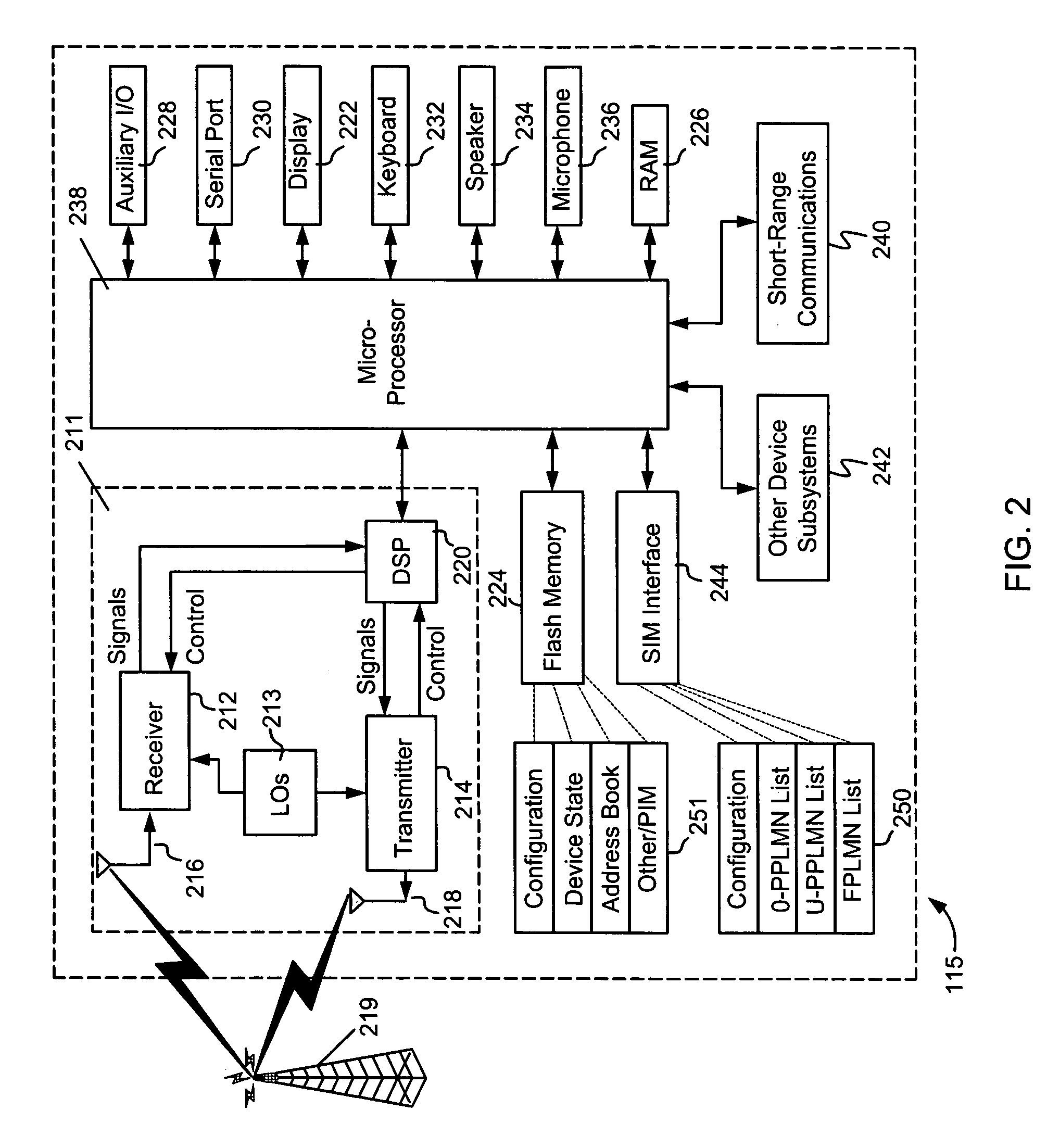Data-capable network prioritization with reject code handling
a data-capable network and reject code technology, applied in the field of mobile stations and network selection methods employed, can solve the problems of inability or lack of communication networks, inability to make a particular communication service, and inability to consider the availability of other services (e.g. data communication services) in the decision-making process, and inability to make communication networks. to meet the needs of data communication services, and inability to make communication networks,
- Summary
- Abstract
- Description
- Claims
- Application Information
AI Technical Summary
Benefits of technology
Problems solved by technology
Method used
Image
Examples
Embodiment Construction
[0024]Methods and apparatus for performing network selection by a mobile communication device are described herein. In situations where more than one wireless network is available in a given coverage area, a method of selecting or assigning priority to a wireless network that provides a data service (or the “best” services) over ones that do not is utilized. Such methods are applicable to mobile devices that operate in accordance with any suitable communication standard, but are particularly applicable to advanced General Packet Radio Service (GPRS) capable mobile stations. In this environment, the method may place a priority on selecting a GPRS-capable network over a Global System for Mobile Communications (GSM) only capable network.
[0025]In particular, reject code handling is utilized for a time-efficient selection of data-capable networks. One illustrative technique of the present application includes the steps of causing a request for data connectivity to be transmitted through ...
PUM
 Login to View More
Login to View More Abstract
Description
Claims
Application Information
 Login to View More
Login to View More - R&D
- Intellectual Property
- Life Sciences
- Materials
- Tech Scout
- Unparalleled Data Quality
- Higher Quality Content
- 60% Fewer Hallucinations
Browse by: Latest US Patents, China's latest patents, Technical Efficacy Thesaurus, Application Domain, Technology Topic, Popular Technical Reports.
© 2025 PatSnap. All rights reserved.Legal|Privacy policy|Modern Slavery Act Transparency Statement|Sitemap|About US| Contact US: help@patsnap.com



